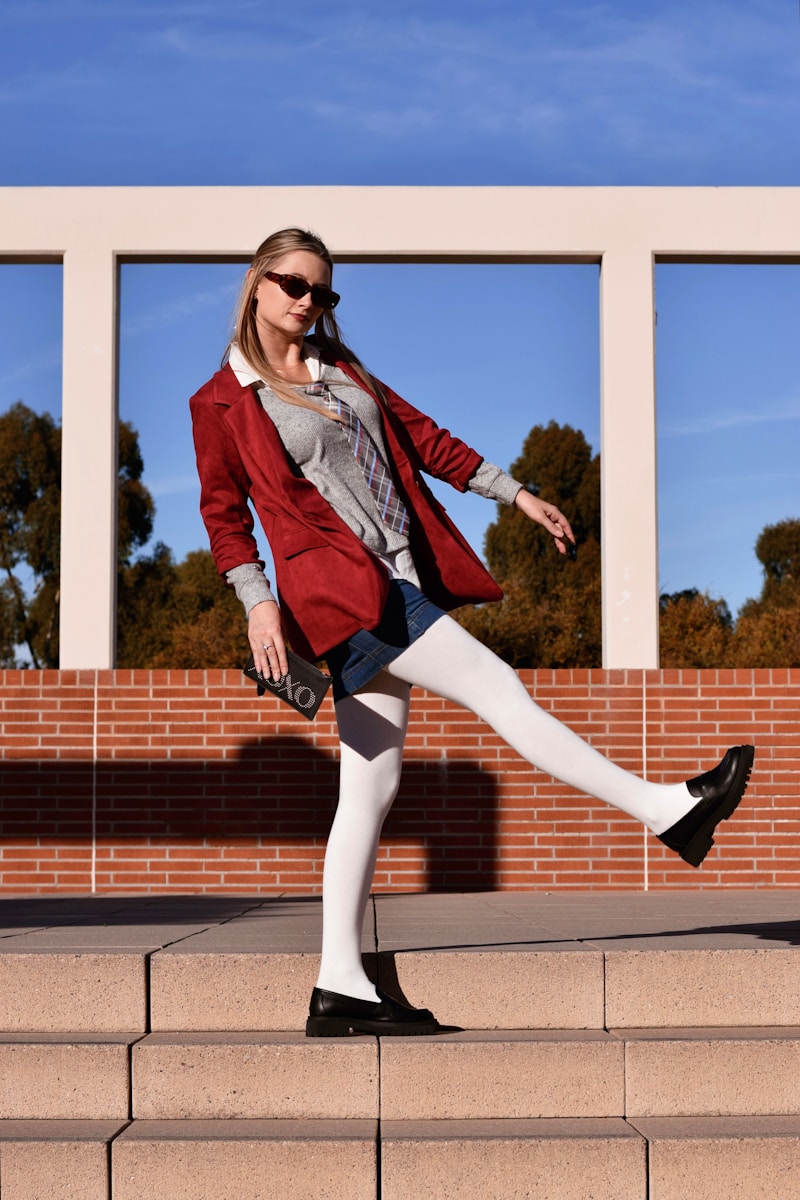In a fashion world increasingly defined by bold colors, viral prints, and maximalist silhouettes, the idea of returning to neutrals might seem like a regression. But look closer — the landscape of neutral fashion has quietly evolved, trading monotony for depth, simplicity for substance. No longer just background players, textured neutrals have become the understated heroes of contemporary wardrobes, offering tactile richness and visual interest without ever raising their voice.
This is not a return to basics, but a reinvention of them. Today’s textured neutrals — from brushed wools and nubby bouclés to ribbed knits and sueded cottons — are a lesson in the power of restraint. They prove that minimalism need not be sterile, and that softness, warmth, and tactility can be just as expressive as saturated palettes and graphic prints.
In this essay, we’ll explore how textured neutrals have transformed the language of fashion, offering a new definition of elegance rooted in touch, comfort, and quiet luxury.
The Evolution of Neutrals: From Blank Canvas to Statement
Neutrals — beige, ivory, gray, taupe, sand, and soft browns — have long been associated with basics. In decades past, they were considered safe, versatile, and largely utilitarian. They formed the foundation upon which “real” fashion statements were layered. A gray wool coat, a beige trench, a cream knit — timeless, yes, but rarely the focal point.
However, the past few years have seen a subtle revolution in how these hues are perceived and styled. Driven by a growing desire for longevity, intentionality, and sensory pleasure in fashion, textured neutrals have come to represent a new form of sophistication — one that favors nuance over noise.
Designers and consumers alike have begun to recognize that the interplay of fabric, structure, and touch can elevate even the most understated palette. A dove gray in suede feels different than in cotton. A camel tone in brushed alpaca takes on a different life than in rigid canvas. Texture, it turns out, is the secret ingredient that transforms neutrality into art.
The Tactile Turn: Why Texture Matters More Than Ever
We live in a paradoxical moment — hyperconnected, yet increasingly craving the physical. As much of our lives have moved online, the value of tangible, tactile experiences has grown. This craving is mirrored in the materials we wear. Texture has become a way to reconnect with our bodies, our environments, and even our emotions.
Textured neutrals cater to this need perfectly. Their muted hues do not compete for attention, allowing the feel of the fabric to take center stage. A chunky oat-colored knit sweater speaks not through color but through its cozy weight and looped structure. A ribbed mocha co-ord set evokes softness and rhythm, inviting touch.
In this way, texture becomes a new form of expression — quiet, yes, but deeply personal. It’s about how clothing feels as much as how it looks. In a fast-paced world, textured neutrals slow us down. They encourage presence. They invite comfort without sacrificing style.
A Language of Layers: Building Dimension Without Color
One of the most compelling aspects of textured neutrals is their ability to create visual depth without relying on bold prints or bright colors. Through layering different materials — think of linen over knit, sherpa paired with suede, or smooth silk under a waffle-textured jacket — an outfit composed entirely of neutrals can still feel rich, complex, and intentional.
This technique is especially popular in capsule wardrobes and minimalist dressing, where versatility is key. A stone-colored ribbed turtleneck may pair effortlessly with cream corduroy pants or a sand-colored bouclé skirt. The hues are similar, but the textures create contrast and rhythm. This is how texture allows for statement-making within the bounds of subtlety.
Designers have taken note. Brands like The Row, Totême, and COS consistently build entire collections around tone-on-tone dressing, using texture to distinguish each piece. Even high street labels are embracing textured neutrals as a way to add luxury appeal without the high cost of embellishment.
The Rise of Quiet Luxury and “Soft Power” Dressing
The textured neutral trend also aligns closely with the rise of quiet luxury — a movement that favors understated elegance over flashy branding or trend-chasing. Rather than proclaiming status through logos or extravagance, quiet luxury whispers it through material, construction, and detail.
Wearing a cashmere crewneck in warm ivory, or a biscuit-toned structured coat in double-faced wool, suggests refinement without arrogance. It’s about taste rather than attention. This form of dressing appeals especially to those seeking what some call “soft power” — a confident, assured aesthetic that doesn’t need to shout to be heard.
In this context, textured neutrals become a language of discernment. Their subtlety communicates depth. Their tactile richness signals care, quality, and intentionality — values increasingly embraced in a post-fast fashion world.
Neutrals Across Seasons: From Winter Cocooning to Summer Airiness
One of the reasons textured neutrals have gained such traction is their seasonless versatility. While they are often associated with autumn and winter — cozy creams, heathered greys, and camel-toned knits — they are just as relevant in warmer months.
In spring and summer, lightweight textures like crinkled cotton, linen slub, raw silk, or open-weave knits bring breathability and dimension without overwhelming. A pale stone shirt dress in crisp cotton voile or a flax-toned, loose-fitting linen set feels both breezy and considered. These textures interact with sunlight, wind, and skin in ways that bring neutrals to life — they are never flat or static.
This seasonal adaptability makes textured neutrals a sustainable investment. They transcend trends and work across climates, layering easily when needed and standing alone when the weather warms.
Texture as Emotion: Clothing That Feels Like Home
Perhaps the most powerful quality of textured neutrals is their emotional resonance. There’s something inherently soothing about soft, warm, earth-toned garments. They feel grounded, calming — almost like wearable therapy. Whether it’s the nostalgia of a chunky oatmeal cardigan that reminds you of your grandmother’s knitting, or the satisfying hug of a plush fleece jacket, textured neutrals often evoke comfort and safety.
This emotional connection is increasingly important in a fashion culture that is no longer just about performance or aesthetics, but also about well-being and mental health. Dressing in textured neutrals can be an act of self-care — a way to armor oneself softly, to navigate the world with ease and confidence.
In uncertain times, these clothes become anchors. They don’t demand transformation; they offer quiet companionship.



